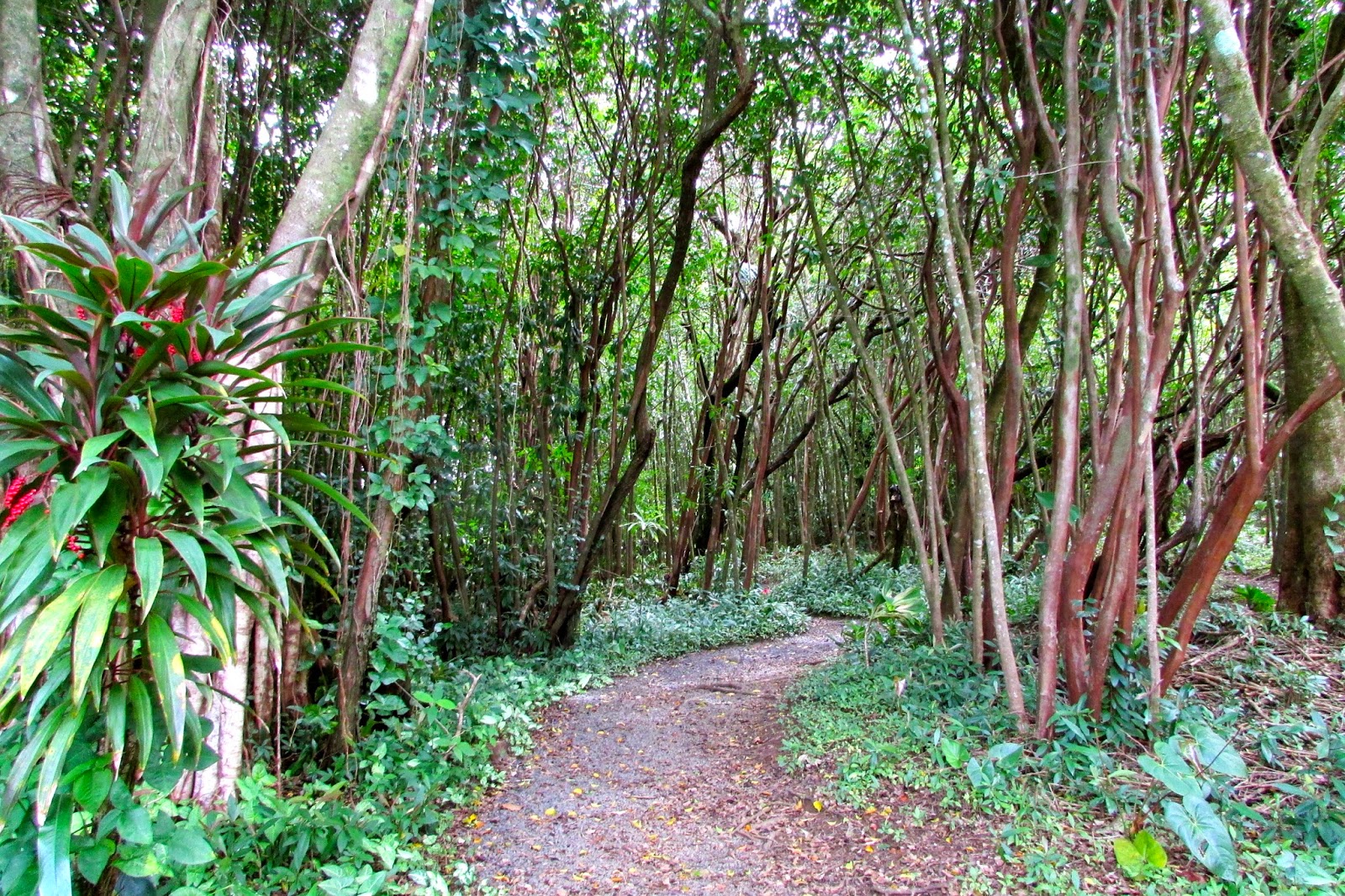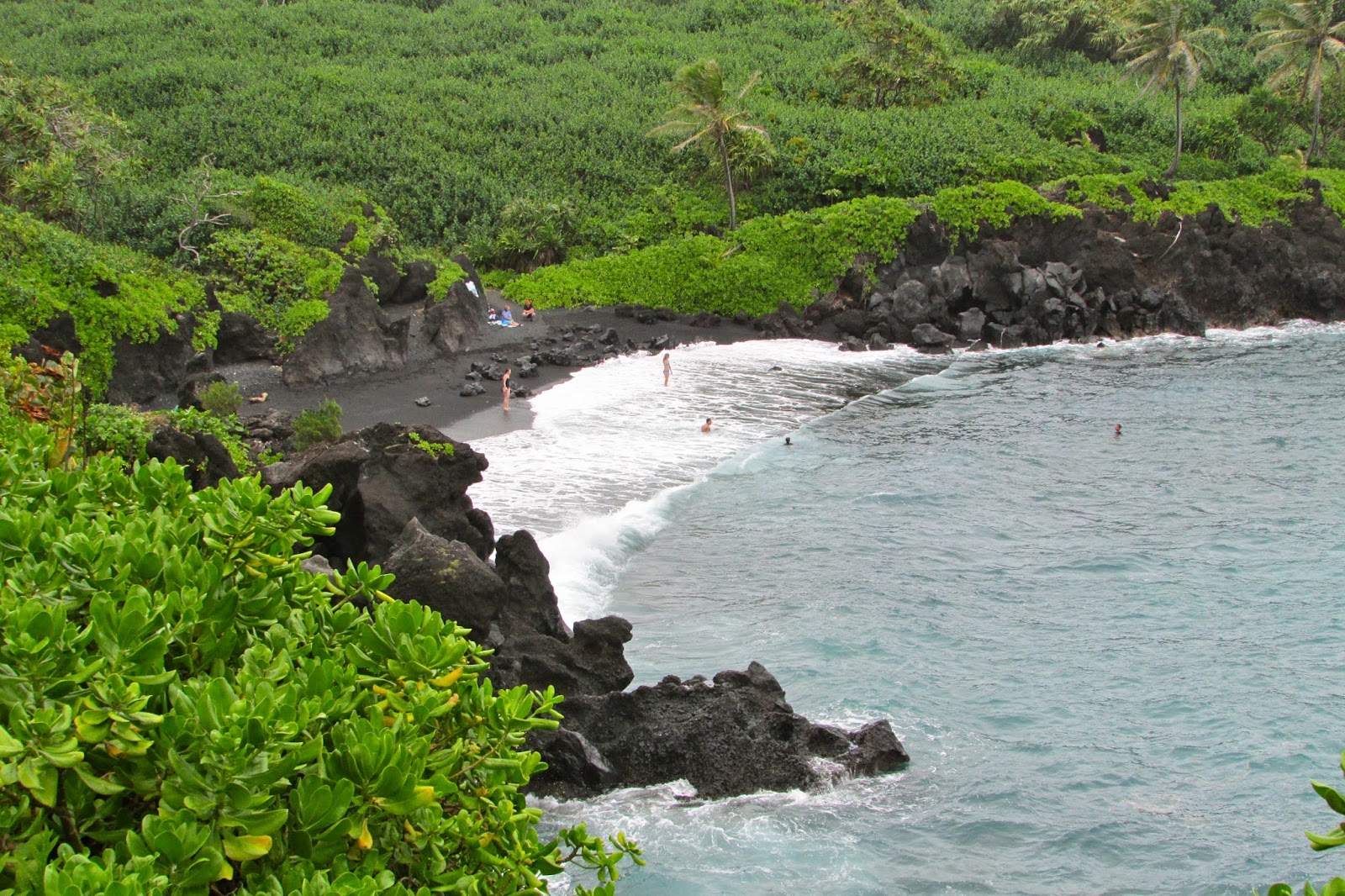We start the drive to Hana from Ka'anapali passing the oldest and most historically significant sugar cane plant in Hawaii. Once the most influential crop in the daily lives of Maui's residents, sugar cane continues to be an economic contributor for the State of Hawaii, both as a leading agricultural crop and in the form of fuel for steam-driven electrical generators.
Ho'okipa Beach Park is to daredevil windsurfers what Everest is to climbers. The world's premier windsurfing beach, it has strong currents, dangerous shorebreaks and razor-sharp coral to offer the ultimate challenge.
We heard the Road to Hana is ravishingly beautiful and it's not just the gorgeous views that make it special. There's also the thrill of expectation - what lies beyond the next jungly curve? Fortunately, the serpentine Hana Highway delivers one jaw-dropping view after another as it winds between tropical valleys and towering cliffs.
Sandi tries on a coconut bra at the Huelo Lookout roadside fruit stand. Only $10 (before bargaining). Beats Victoria's Secret any day.
The 30-minute Waikamoi Nature Trail requires sturdy sandals to navigate the extensive root system of the trees.
Waikamoi Falls.
The Garden of Eden Arboretum offers a tamer version of paradise. The winding paths are neatly maintained, about 700 plants are labeled, and the hilltop picnic tables sport gorgeous views.
The aptly-named Rainbow Eucalyptus Tree.
A 1000 year-old mango tree graces the gardens.
The rocky black-sand beach at Honomanu Bay is used mostly by local surfers and fishers.
We're halfway to Hana here at Ke'anae and our reward is dramatic landscapes and the friendliest seaside village on the route.
The Ke'anae Congregational Church is a beautiful old stone church that was established in 1860. It is the only building in this area to survive the devastating tsunami of April 1, 1946.
We stop briefly along the road for a glimpse of the village of Wailua and it's old church.
Three Bears Falls is a real beauty. It takes its name from the triple cascade that flows down a steep rockface on the inland side of the road.
We have a crush on Coconut Glen. Trained at the New England Culinary Institute, eco-minded Glen Simkins whips up some might delicious organic, vegan ice cream, which is served in a coconut shell with a coconut shard for a spoon. The ice cream comes in five flavours (we chose chili chocolate and mango) and is so tasty we don't even notice it's made from coconut milk, not cream.
Pa'iloa Beach in Wai'anapanapa State Park is hands-down the prettiest black-sand beach on Maui.
Black pebbles carpet the upper beach.
We walk through a small lava rock cavern next to the beach with a pebbly floor.
Built in 1862 and restored in the 1990s St. Joseph Church along the road between Kaupo and Upcountry Maui, is once again falling into disrepair. If something isn't done soon it could likely join the remnants of the crumbling walls of the original church sitting alongside it.
Kahanu Garden near Hana delivers a double blast of mana: Hawaii's largest temple and one if its most important ethnobotanical gardens share the 294-acre site. The garden paths skirt Pi'ilanihale Heiau, an immense lava-stone platform reaching 450ft in length. The history of this astounding heiau (an ancient Hawaiian temple or sacred site) is shrouded in mystery, but there's no doubt that it was an important religious site for Hawaiians.
Archaeologists believe construction began as early as AD 1200 and the heiau was built in sequences. The final grand scale was the work of Pi'ilani, the 14th century Maui chief who is also credited with the construction of many of the coastal fishponds in the Hana area.
The National Tropical Botanical Garden, which is dedicated to the conservation of rare and medicinal plants from the tropical Pacific, maintains Kahanu.
Noni is one of the most widely used medicinal plants in Polynesia. The very peculiar shaped "grenade-like" fruit has a pungent odor that resembles Limburger cheese when overripe. Noni pills, fermented tonics, and other preparations are sold at natural medicine stores.
Tomorrow we're heading "And Beyond!" (Hana) bound for Kihei.








































No comments:
Post a Comment